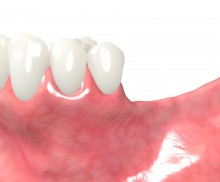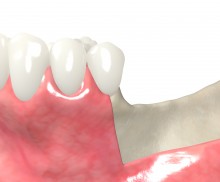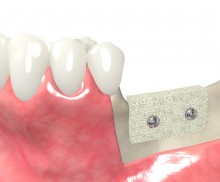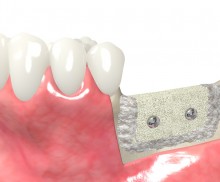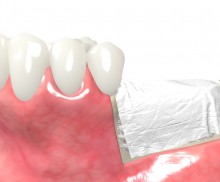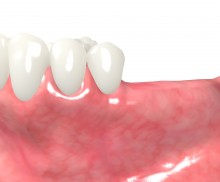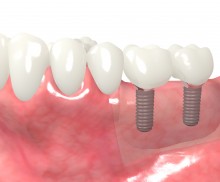Block augmentation - allogenic blocks
|

Due to the unique production process (e.g. no sintering), maxgraft® blocks retain their collagen matrix and the natural biomechanical properties of the bone matrix; this provides the excellent handling properties of this material. For experienced oral and maxillofacial surgeons, allograft bone blocks for block augmentation are the only real alternative to harvesting the patient's autologous bone. Although the adjustment of the block shape prior to insertion can be relatively time consuming, this procedure provides a stable implant bed and a highly predictable outcome.
An appropriate soft tissue management that allows a tension-free wound closure is of the utmost importance. In addition, the sharp edge smoothing as well as the covering of the bone block with a slowly resorbing barrier membrane, such as the Jason® membrane, can help prevent soft-tissue perforation and ensure an undisturbed healing. The covering of the block with a particulate slowly resorbable bone-grafting material (e.g. cerabone® or maxresorb®) can help prevent a too-fast resorption and smoothen the surface contours especially in the aesthetic area.
In contrast to allogenic bone blocks, the purely mineral bovine or synthetic bone blocks are very brittle and therefore hard to shape or fix. Block augmentation with cerabone® or maxresorb® blocks is a challenging technique, only suitable for surgeons with prior experience with such materials.
Please Contact us for Literature.
